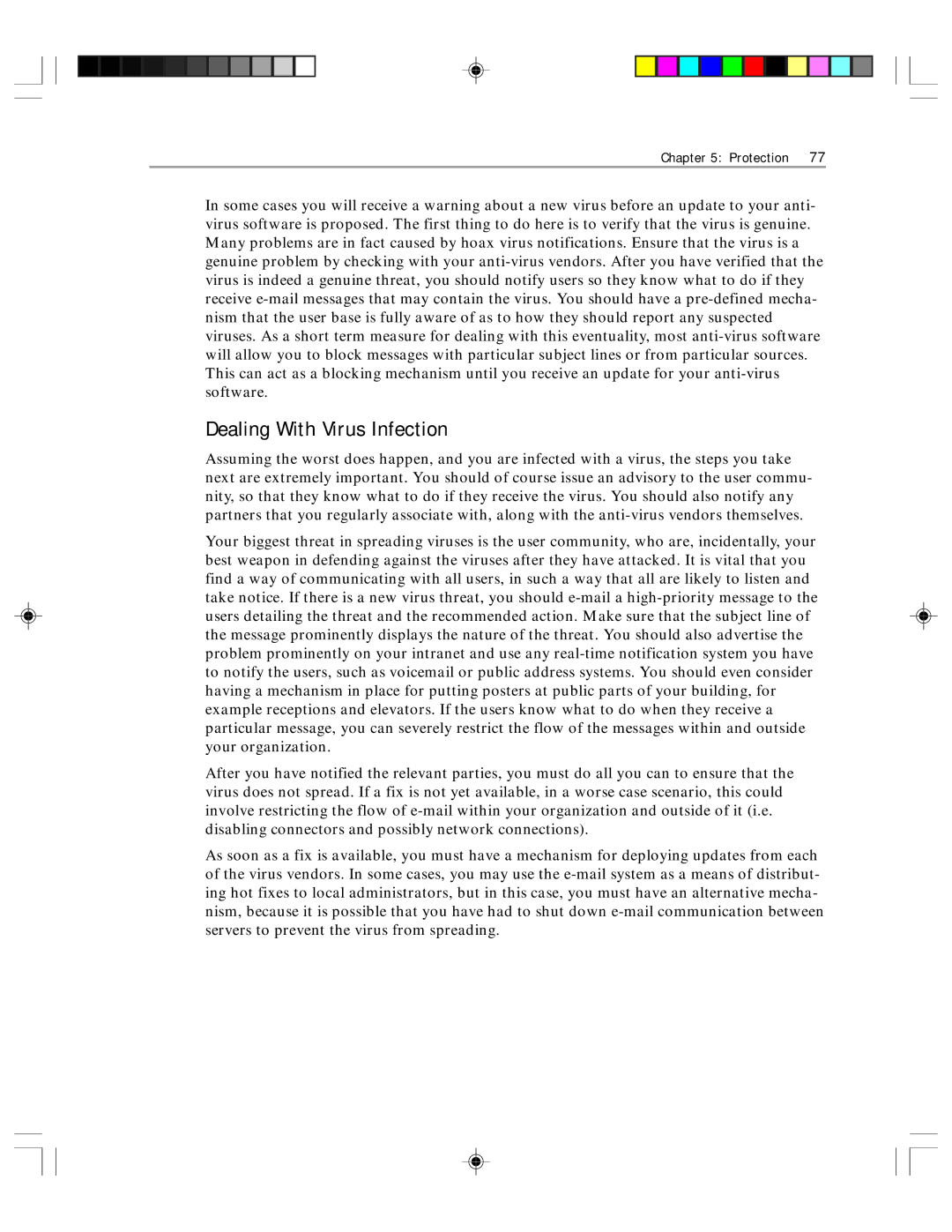In some cases you will receive a warning about a new virus before an update to your anti- virus software is proposed. The first thing to do here is to verify that the virus is genuine. Many problems are in fact caused by hoax virus notifications. Ensure that the virus is a genuine problem by checking with your anti-virus vendors. After you have verified that the virus is indeed a genuine threat, you should notify users so they know what to do if they receive e-mail messages that may contain the virus. You should have a pre-defined mecha- nism that the user base is fully aware of as to how they should report any suspected viruses. As a short term measure for dealing with this eventuality, most anti-virus software will allow you to block messages with particular subject lines or from particular sources. This can act as a blocking mechanism until you receive an update for your anti-virus software.
Dealing With Virus Infection
Assuming the worst does happen, and you are infected with a virus, the steps you take next are extremely important. You should of course issue an advisory to the user commu- nity, so that they know what to do if they receive the virus. You should also notify any partners that you regularly associate with, along with the anti-virus vendors themselves.
Your biggest threat in spreading viruses is the user community, who are, incidentally, your best weapon in defending against the viruses after they have attacked. It is vital that you find a way of communicating with all users, in such a way that all are likely to listen and take notice. If there is a new virus threat, you should e-mail a high-priority message to the users detailing the threat and the recommended action. Make sure that the subject line of the message prominently displays the nature of the threat. You should also advertise the problem prominently on your intranet and use any real-time notification system you have to notify the users, such as voicemail or public address systems. You should even consider having a mechanism in place for putting posters at public parts of your building, for example receptions and elevators. If the users know what to do when they receive a particular message, you can severely restrict the flow of the messages within and outside your organization.
After you have notified the relevant parties, you must do all you can to ensure that the virus does not spread. If a fix is not yet available, in a worse case scenario, this could involve restricting the flow of e-mail within your organization and outside of it (i.e. disabling connectors and possibly network connections).
As soon as a fix is available, you must have a mechanism for deploying updates from each of the virus vendors. In some cases, you may use the e-mail system as a means of distribut- ing hot fixes to local administrators, but in this case, you must have an alternative mecha- nism, because it is possible that you have had to shut down e-mail communication between servers to prevent the virus from spreading.

